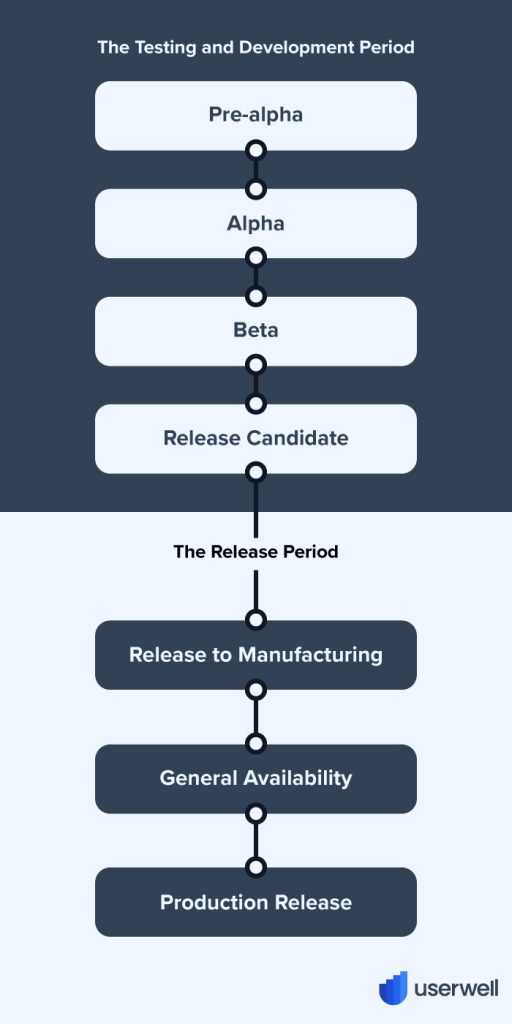GA (General Availability)
General Availability is when the general public can purchase your product and expect that you can support it.
One of the goals of any product team is to get to GA.
But what is GA? When your product is completely tested and feature-complete, you’re ready to go into GA. GA means General Availability, and it’s just one step in a product’s life cycle. This is when your customers can use your product to its full capacity and expect it to make a difference in their lives. But there’s more to General Availability than that.
In this article, we’ll discuss GA, what it means for you and your customers, and why it’s important.
Table of contents
What is GA (General Availability)?
General Availability (GA) is the period when a product is released to the general public. A product that is generally available is distributed on the company’s usual sales channels. General availability comes after release to marketing (RTM) and is part of the release period. A product under GA has already completed all testing and development and is now stable.
Synonyms include ‘going live’, ‘live release’, or ‘production release’.
What Does It Mean For You?
As far as customers are concerned, General Availability marks that they can now purchase the product and expect support for it when in use. A customer using your product after it has hit GA can use it as intended, without providing any specific feedback, unless something goes wrong and they need troubleshooting assistance.
Part and parcel of general availability is product support. A product does not move into GA until after it has gone through rounds of testing and has an expected range of behavior. This means that you can assemble documentation and guide customers through troubleshooting for typical issues. This is part of a product’s support infrastructure and should already be in place when the product enters GA.
For development teams, general availability means that you have a stable release on which to base future updates. GA signals to you, your team, and your customers that you’re done with the experimentation and testing phases, and are now focused on how its final incarnation serves your customers. The customers know that they can get a solid, reliable product that won’t change too much. Your team knows that they don’t need to make any significant changes and can focus on keeping the product running.
Think of GA as a guarantee for all parties. You’re promising your customers that your product will live up to the marketing hype and will be useful to them. You’re also promising your team that their work has borne fruit and they can move on to the next phase, instead of spending all their time on making the product function.
General Availability Versus Beta Testing
Both of these steps involve pushing the product out to an audience. However, there’s a very sharp distinction between these two phases, especially with regards to their purpose.
Beta testing is intended to test the product and ensure it is ready for final release. This applies to both closed and open betas, regardless of how open the beta is. Ultimately, beta testing solicits feedback to improve a product and ensure it is ready for final release.
General availability comes after your team considers the product ready. There will still be bug fixes, changes, and updates over its lifetime, but at the GA stage, your main concern is getting your product out there into the hands of users, specifically so they can use it.
Where Is GA on the Product Life Cycle?
General Availability comes as the high point of the software release life cycle. It comes after a product has gone through all stages of testing and has passed through all the steps needed to make it a viable product. A product under GA has completed all the company’s security and compliance tests, has a marketing and sales plan backing it up, and has a support infrastructure that can look after any troubleshooting.
Except for products with long development times, GA is typically the longest phase in a release life cycle. Products are typically under general availability for some years, receiving support and updates for the duration. Thus, GA is when your company gets the return on the investment made during the testing and development phases.
General availability stops when sales and support do. When a company ceases these, the product moves out of general availability and into its end-of-life (EOL) phase. Once a product enters EOL, using it becomes a lot riskier. Some products may cease to be usable entirely once they enter EOL.
It’s easier to view GA in context with the other steps. Here’s a handy illustration:

This is a general overview that should hold for most products. As always, the duration of each phase will depend on your product, including GA itself.
Pushing It Out To Your Customers
As far as the public is concerned, they’re waiting for your product to go into general availability so that they can get your hands on it. It’s more than just a label, though. It’s a guarantee that your product is ready for them, that you can help them if something goes wrong, and that your product can do the job you’ve advertised it for.
